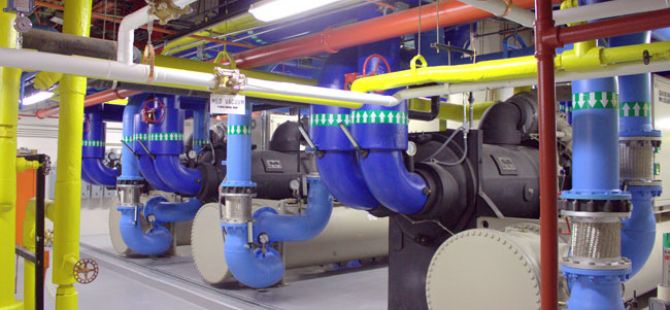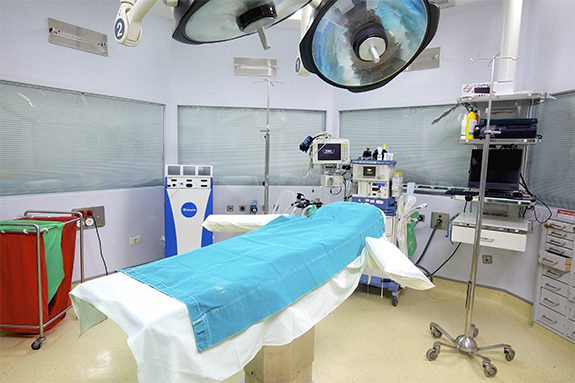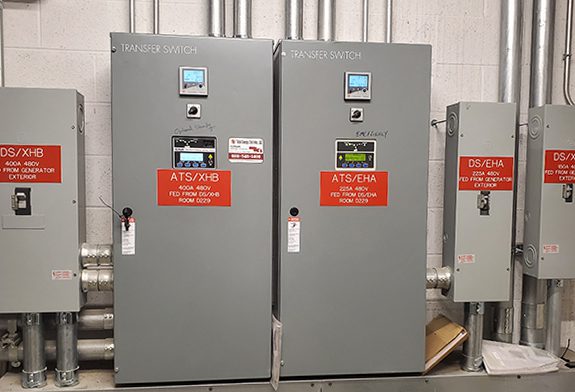Does it seem like you’re flowing more chilled water than is warranted by the load? Are there times when your chillers short cycle? Does it seem like your chilled water distribution pumps never slow down? Are you getting hot calls from all over your system, even though you seem to have twice as much cooling plant capacity as you need?
If you have a properly designed, operated, and maintained variable flow chilled water system, you probably answered “no” to all of these questions. If you answered “yes,” you’re not alone. Many chilled water plants experience the above-mentioned problems at some point, and often the problems are a result of “Low ∆T” syndrome.
Causes and effects of “Low ∆T” syndrome
When a cooling system is designed for a specific chilled water temperature differential (e.g., 44˚F supply water temperature and 54˚F return water temperature), and the actual differential is something less than design (e.g., 44˚F supply water temperature and only 50˚F return water temperature), the symptoms noted above will appear. Problems associated with less-than-design chilled water temperature differentials are collectively given the “Low Delta-T” or “Low ∆T” moniker and represent operating conditions associated with excessive chilled water flow rates for a given cooling load. Low ∆T syndrome is caused by a myriad of problems that reduce the heat transfer effectiveness between the chilled water system and airstream you are trying to condition. The result is a need for greater chilled water flow than was intended in the design of the system. Low ∆T syndrome can stem from mistakes or oversight during design or construction, or from degraded system performance over time.
Design issues that may lead to Low ∆T syndrome are related to bypassing chilled water around coils, overflowing of the chilled water coils, poor cooling coil selections, control valves selected with insufficient actuator close-off pressure, or lack of control authority. Construction issues such as air-bound coils or non-uniform airflow across the face of a coil can also contribute to Low ∆T syndrome by reducing the heat transfer effectiveness of a cooling coil. Some common examples of operation, maintenance, or age-related issues that can contribute to Low ∆T syndrome include blocked or dirty cooling coils, replacement of control valves without consideration for the design criteria, adjustment of control setpoints beyond the range of the system, and loss of water and air system balance.
When chilled water ∆T is less than design, the system does not perform efficiently, and energy is wasted. Pump energy is increased because greater flow is required. Assuming a 10˚F design chilled water temperature difference (e.g., 44˚F supply water temperature and a 54˚F return water temperature), there is about an 11% increase in flow rate for a 1˚F drop in return water temperature in variable flow systems. An 11% increase in flow will result in a 23% increase in pressure drop. The combination of an 11% increase in flow and a 23% increase in pressure drop results in about a 37% increase in pump energy use.
Low ∆T makes it difficult to load chillers efficiently. Chiller capacity becomes flow-limited rather than load-limited. As a result, more chillers, chilled water pumps, condenser water pumps, and cooling tower fans have to be operated to meet a given cooling load. This also wastes energy — especially if the chiller compressors and cooling tower fans do not have variable speed drives.
Keys to better chilled water system performance
Document your piping network, cooling coils, and plant, including all pumps, towers, chillers, and associated trim. Knowing what you really have out there is half the battle.
Keep your fingers on the pulse of your chilled water system. Instrument the system so that chilled water temperatures and flow rates can be read locally by your staff and trended automatically by your Building Automation System.
Make sure that retrofits and modifications to your chilled water system will not contribute to low chilled water ∆T. For example, if an existing air handling unit is retrofitted with a new cooling coil, make sure that the entering and leaving chilled water temperatures are realistic. Or, if a new chiller is being added to your existing plant, make sure the new chiller is capable of making at least the same supply water temperatures as the existing equipment. Cooling coil control valve selection is critical. Valves must be selected with the appropriate design criteria in mind (e.g., pressure differential range, valve authority, etc.). These and other criteria must be evaluated carefully so that changes to the system do not adversely affect the performance of your plant.
Seek professional expertise to avoid overspending. If you suspect you have problems, or you want to confirm that you don’t need a new chiller to handle that building addition, get your chilled water system analyzed. The study can address age, capacity, and condition issues, or simply be limited to system hydraulics. In our experience, chilled water system performance problems can often be solved with the “ounce of prevention” approach, including documentation, analysis, and retrofit of the distribution subsystem, rather than the “pound of cure” approach, which can entail significant capital spending for new central plant capacity.



